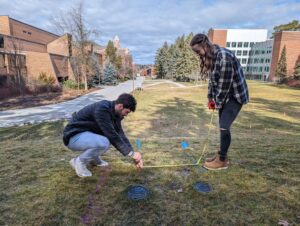PULLMAN – Americans are now more likely to die from an opioid overdose than a vehicle accident. From 1999 to 2017, almost 400,000 Americans have died from an opioid related overdose.
That’s an average of 130 fatalities every day.
Through the Opioid Overdose Prevention in States program, 45 states are provided strategies to improve safe opioid prescribing practices.
Pullman Regional Hospital is now carrying a new surgical procedure as an alternative to opioid prescriptions called COOLIEF- the first and only radiofrequency treatment to relieve chronic pain for up to 12 months.
“Anesthesia traditionally used opioids as a main portion of an anesthetic and we are moving away from that. We are moving away from that being the main anesthetic for anesthesia and pharmaceutical companies as well as investigators in medicine will continue more and more none opioid pain adjuncts to help fight this opioid crisis” said Corey Johnson, Pullman Regional Hospital Anesthesia Associate.
The Washington State department of Health donated almost 90,000 dollars to provide WSU Spokane training sessions to pre-med students with a new curriculum and facilities to recognize opioid addiction in patients.
The WSU Pullman Pharmacy program moved to the Spokane Campus in 2013.
“I don’t think we have any courses that come close to covering pharmacology, but there should be because we are a drug oriented society and people need to know more about drugs-not just drug abuse but drugs in general,” said Raymond Quock, WSU Psychology professor.
With this national epidemic, pre-med students at WSU can take an elective class that focuses on the ethics, financial and personal aspects of medical practices.
“Before this research project, I knew it was a problem but I did not realize how much of an impact that it has had on our society and it is something that needs to be forced to learn so that they are aware of the situation” said Audrey Denny, a WSU Pre-Med student.
There have been multiple state successes in decreasing opioid prescriptions up to 85 percent from 2012 to 2015 such as Florida, Ohio and Kentucky.
The Center for Disease Control and Prevention wants to provide more surveillance activities to address the states’ ever-changing needs.
EDITOR’S NOTE: The video was aired on a previous broadcast.















